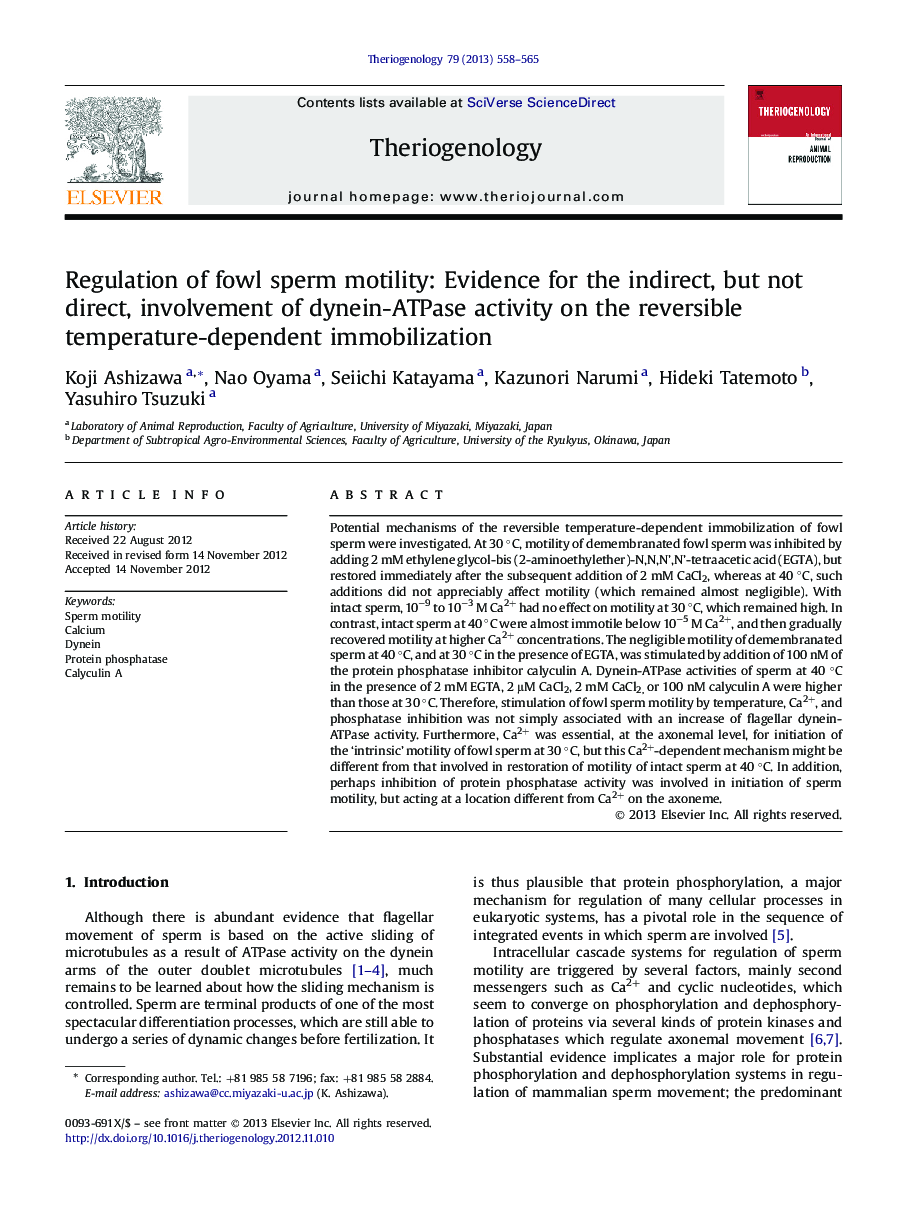| Article ID | Journal | Published Year | Pages | File Type |
|---|---|---|---|---|
| 10892105 | Theriogenology | 2013 | 8 Pages |
Abstract
Potential mechanisms of the reversible temperature-dependent immobilization of fowl sperm were investigated. At 30 °C, motility of demembranated fowl sperm was inhibited by adding 2 mM ethylene glycol-bis (2-aminoethylether)-N,N,N',N'-tetraacetic acid (EGTA), but restored immediately after the subsequent addition of 2 mM CaCl2, whereas at 40 °C, such additions did not appreciably affect motility (which remained almost negligible). With intact sperm, 10â9 to 10â3 M Ca2+ had no effect on motility at 30 °C, which remained high. In contrast, intact sperm at 40 °C were almost immotile below 10â5 M Ca2+, and then gradually recovered motility at higher Ca2+ concentrations. The negligible motility of demembranated sperm at 40 °C, and at 30 °C in the presence of EGTA, was stimulated by addition of 100 nM of the protein phosphatase inhibitor calyculin A. Dynein-ATPase activities of sperm at 40 °C in the presence of 2 mM EGTA, 2 μM CaCl2, 2 mM CaCl2, or 100 nM calyculin A were higher than those at 30 °C. Therefore, stimulation of fowl sperm motility by temperature, Ca2+, and phosphatase inhibition was not simply associated with an increase of flagellar dynein-ATPase activity. Furthermore, Ca2+ was essential, at the axonemal level, for initiation of the 'intrinsic' motility of fowl sperm at 30 °C, but this Ca2+-dependent mechanism might be different from that involved in restoration of motility of intact sperm at 40 °C. In addition, perhaps inhibition of protein phosphatase activity was involved in initiation of sperm motility, but acting at a location different from Ca2+ on the axoneme.
Related Topics
Life Sciences
Agricultural and Biological Sciences
Animal Science and Zoology
Authors
Koji Ashizawa, Nao Oyama, Seiichi Katayama, Kazunori Narumi, Hideki Tatemoto, Yasuhiro Tsuzuki,
